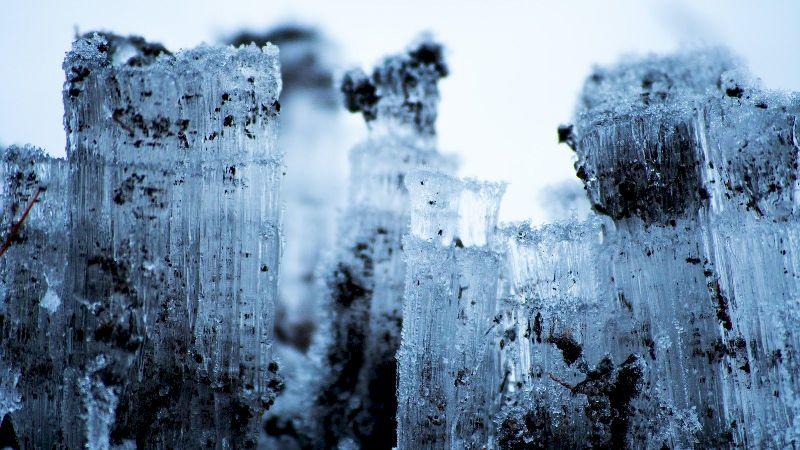
Photo by Jaël Vallée on Unsplash
Polycrystals — made up of many tiny crystals (‘grains’) fused into a whole — can behave very differently from single crystals. For instance, some polycrystals made of micrometre-sized silica or polystyrene particles are known to be ‘soft’; they begin to flow when a force such as pressure or gravity is applied. The particles of these polycrystals have a very weak force binding them together, allowing for movement when force is applied. But, single crystals, made entirely of one solid grain, cannot flow like polycrystals. No wonder then that these unique properties of polycrystals have piqued the interest of scientists in recent decades.
A recent study by researchers at the Indian Institute of Technology Bombay (IIT Bombay) and the Institute of Mathematical Sciences (IMSc), Chennai, has revealed just how these soft polycrystals behave when forced to flow through channels of different widths. This work, published in Physical Review Letters, was funded by the Industrial Research and Consultancy Centre (IRCC) at IIT Bombay.
The researchers ran computer simulations of soft polycrystals, using micrometre-sized particles to make its grains, and forced it to flow through a channel constricted between two rough walls. “There have been experiments using soft amorphous materials — whose atoms are totally unorganised — like gel and toothpaste in narrow channels, but none on polycrystals,” says Prof Anirban Sain from IIT Bombay, who led the study, in collaboration with Prof Pinaki Chaudhuri from IMSc.
The researchers found that the polycrystals in their simulations remained jammed in the channel initially, even when they were given a push. It was only when this push was sufficiently high did they start to move. Interestingly, the polycrystals behaved differently depending on the width of the channel.
In channels which were a few tens of micrometres wide, the researchers observed that the grains in the middle of the channel moved sluggishly at a constant speed, almost like solid blocks. But, the parts of the grains close to the wall hardly moved due to friction offered by the walls. “The grains cannot let its particles move at different speeds, else they break,” explains Dr Tanmoy Sarkar from IIT Bombay, who worked on the simulations. Since the parts of the grain touching the walls could not move as fast as the rest of it, the grain broke into particles. These particles behaved similar to liquids and were seen to be almost stagnant near the walls.
It is not surprising then that, for narrower channels, most of the grains in the polycrystal broke into particles and flowed through the middle along with the few intact grains. In general, there was a gradual increase in the speed of the particles as their distance from the walls increased.
An interesting pattern emerges from the chaos of these moving particles. As the solid grains slowly move forward in the liquid soup, the grains gain some particles at their back and lose some from the front. Due to this constant restructuring, the grains appear to move backwards even though all the particles are actually moving forward due to the force! “Such patterns have been seen before in amorphous materials moving in narrow channels. But we found that, for polycrystals, it occurs within the liquid–solid mixture, which is new,” shares Prof Sain.
Insights from this type of research are important to engineer new materials. For instance, scientists have already exploited the structures of soft polycrystals to create photonic crystals that can filter out certain frequencies of light. Hence, it is possible that a deeper understanding of material properties like their flow could open up new applications in the future.
“Our work should motivate further experimental exploration of such flow behaviour in colloidal polycrystals,” signs off Prof Sain.






